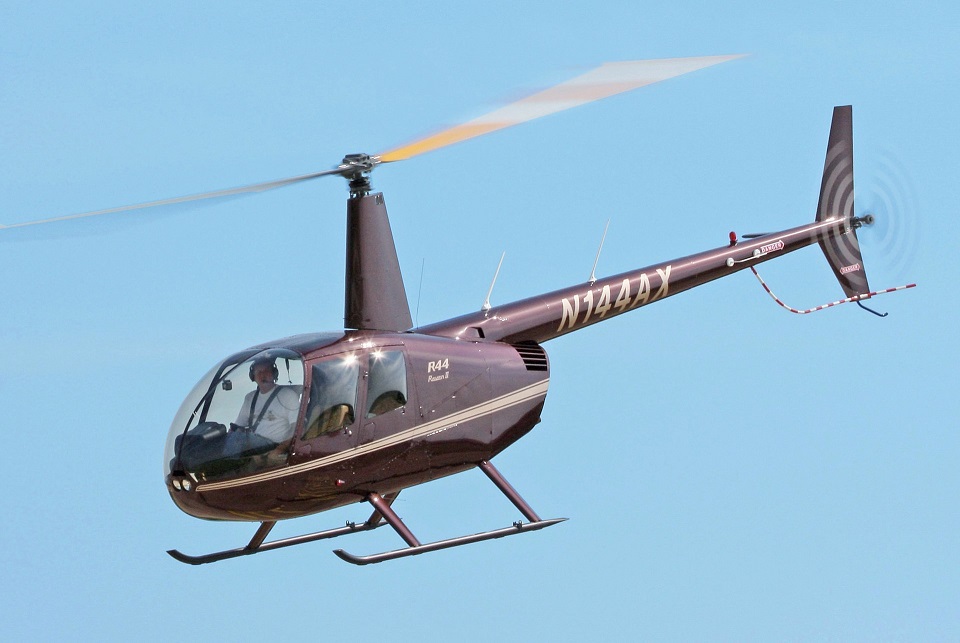Aviation
Tragic Post Emerges After Pilot Steals Helicopter and Crashes into Hotel

In a tragic turn of events, a young pilot who stole a helicopter and crashed it into a Cairns hotel had shared his excitement for his “next adventure” just months before the incident.
The crash occurred early Monday morning in Cairns, a popular tourist city near Australia’s Great Barrier Reef, leading to chaos and panic as guests were evacuated from the DoubleTree by Hilton.
The helicopter collided with the hotel’s rooftop, causing significant damage and sending plumes of smoke and flames into the air, prompting an urgent evacuation of nearly 400 hotel guests as thick smoke and flames poured from the building.
Fortunately, the only reported injuries were to a couple staying at the hotel, who were treated for smoke inhalation and have since been discharged. Authorities confirmed that no one else was harmed in the crash.
The pilot, who tragically lost his life in the crash, was identified as a member of the Nautilus Aviation ground crew. Although he held a helicopter pilot’s license from New Zealand, he was not authorized to fly in Australia. According to Nautilus Aviation, the man gained unauthorized access to the company’s helicopter hangar and took one of their helicopters without permission.
Just hours before the crash, the pilot had been celebrated at a farewell party thrown by Nautilus Aviation, marking his promotion to a ground crew position at another company base. It was reported that he had been drinking at the party prior to the crash.
Witnesses described a harrowing scene as the helicopter, flying at high speed and notably low to the ground, zipped past the hotel twice before crashing into the rooftop. The Cairns Hilton, situated right on the coast, became the center of an intense emergency response.
In a statement issued on Tuesday afternoon, Cairns airport officials reassured the public that a review of the incident confirmed there was no compromise of airport security measures. “To reassure our community, we wish to confirm a review has been conducted, showing no compromise of our airport fence or access points,” said Mr. Baker, addressing concerns about the security breach.

Aviation
China Eastern Receives Its Ninth C919 Aircraft, Marking a New Milestone

China Eastern Airlines (CEA) has reached a significant milestone with the delivery of its ninth COMAC C919 aircraft, continuing its lead as the launch customer for China’s domestic narrow-body airliner.
On Thursday, the airline received the latest addition to its fleet, registered as B-657T, marking another step in China’s ambitious efforts to establish itself as a key player in the global aerospace market.
Virgin Australia Launches Black Friday Sale on Flights Worldwide
This delivery is part of a major achievement for COMAC (Commercial Aircraft Corporation of China), which has now delivered a total of 10 comac c919 in 2024 alone, a remarkable increase from just three jets delivered by the end of 2023.
The C919 program represents China’s entry into the competitive market for commercial aircraft, aiming to rival the dominance of manufacturers like Airbus and Boeing in the narrow-body sector.
These 6 Airlines Are Giving You Free Wi-Fi on Your 2025 Flights
One standout feature of the c919 is its innovative in-flight technology, particularly its Wi-Fi system. Developed by the China Electronics Technology Group Corporation (CETC), this system allows passengers to connect to the “CEAIR-WIFI” wireless hotspot, providing seamless access to in-flight entertainment.
Through the website www.muflyer.com, travelers can enjoy a range of features including “Air Cinema” and “Air Games,” which enhance the flying experience.
Looking ahead, COMAC’s ambitions are not limited to narrow-body aircraft. At the 15th China International Aviation and Aerospace Exhibition in Zhuhai, c919 aircraft price made waves with the announcement of over 100 new aircraft orders.
A significant highlight was a high-profile agreement with Air China for the development of the C929, a widebody aircraft set to compete c919 vs a320 and c919 vs 737 with these models.
-

 Aviation2 months ago
Aviation2 months agoMicrosoft Flight Simulator Raises $3 Million to Bring Back the An-225 Mriya
-

 Airlines2 months ago
Airlines2 months agoQatar Citizens Can Travel to the United States Without a Visa
-

 Aviation2 months ago
Aviation2 months agoQatar Airways bans these new Electronic Devices on plane
-

 Defence2 months ago
Defence2 months agoWhich Country Has the Largest Fleet of Fighter Aircraft?
-

 Airlines1 week ago
Airlines1 week agoDAMAC Air: Dubai’s New Luxury Airline Offers Free Flights for Registration
-

 Airport2 months ago
Airport2 months agoWestern Sydney Airport Welcomes Its First Plane After 6 Years of construction
-

 Airlines7 days ago
Airlines7 days agoAir India to Launch aircraft maintenance training institute in Bengaluru
-

 Aviation2 months ago
Aviation2 months agoDid you know ? Once Boeing 747 carried 1088 passenger in 1991








